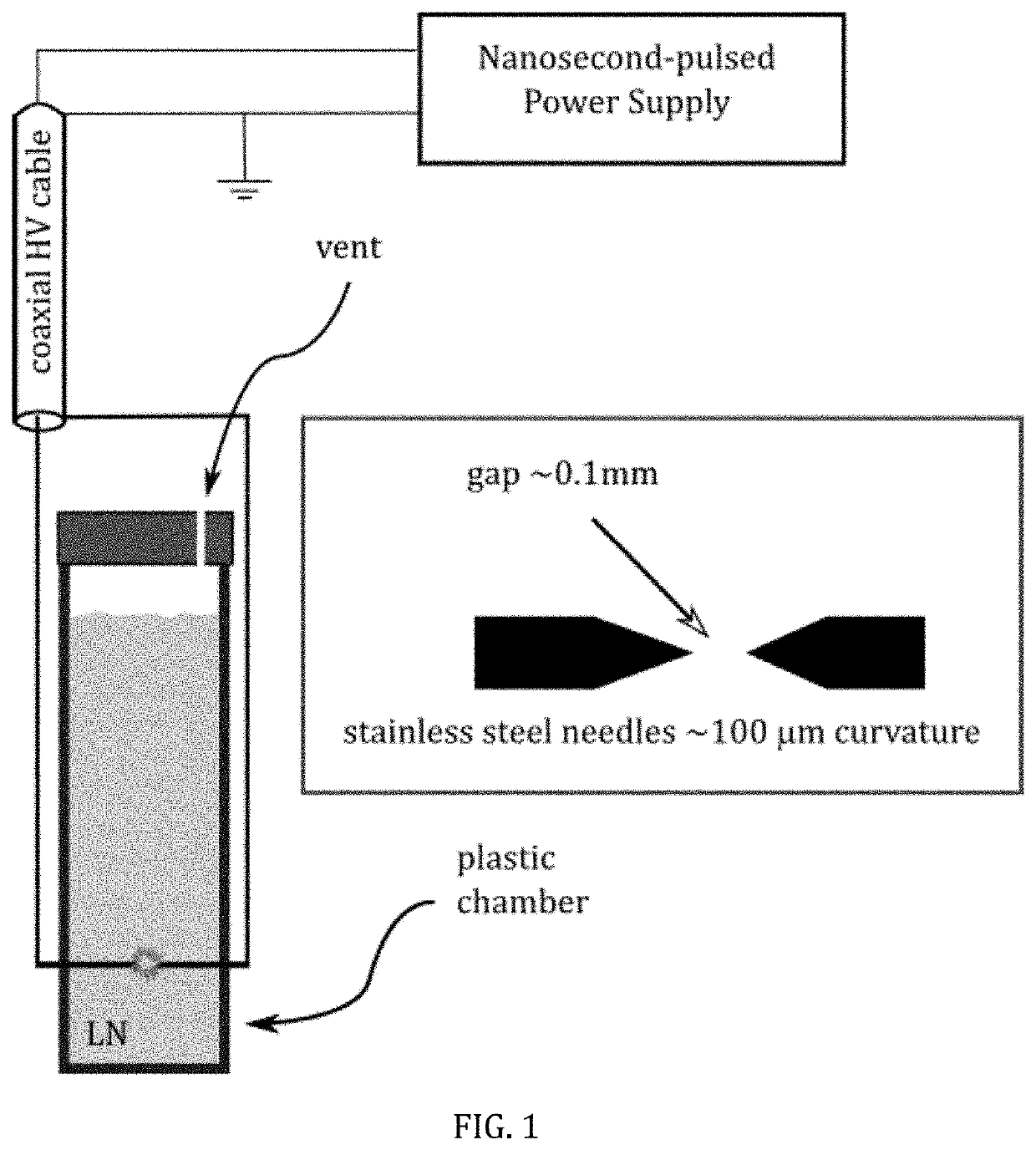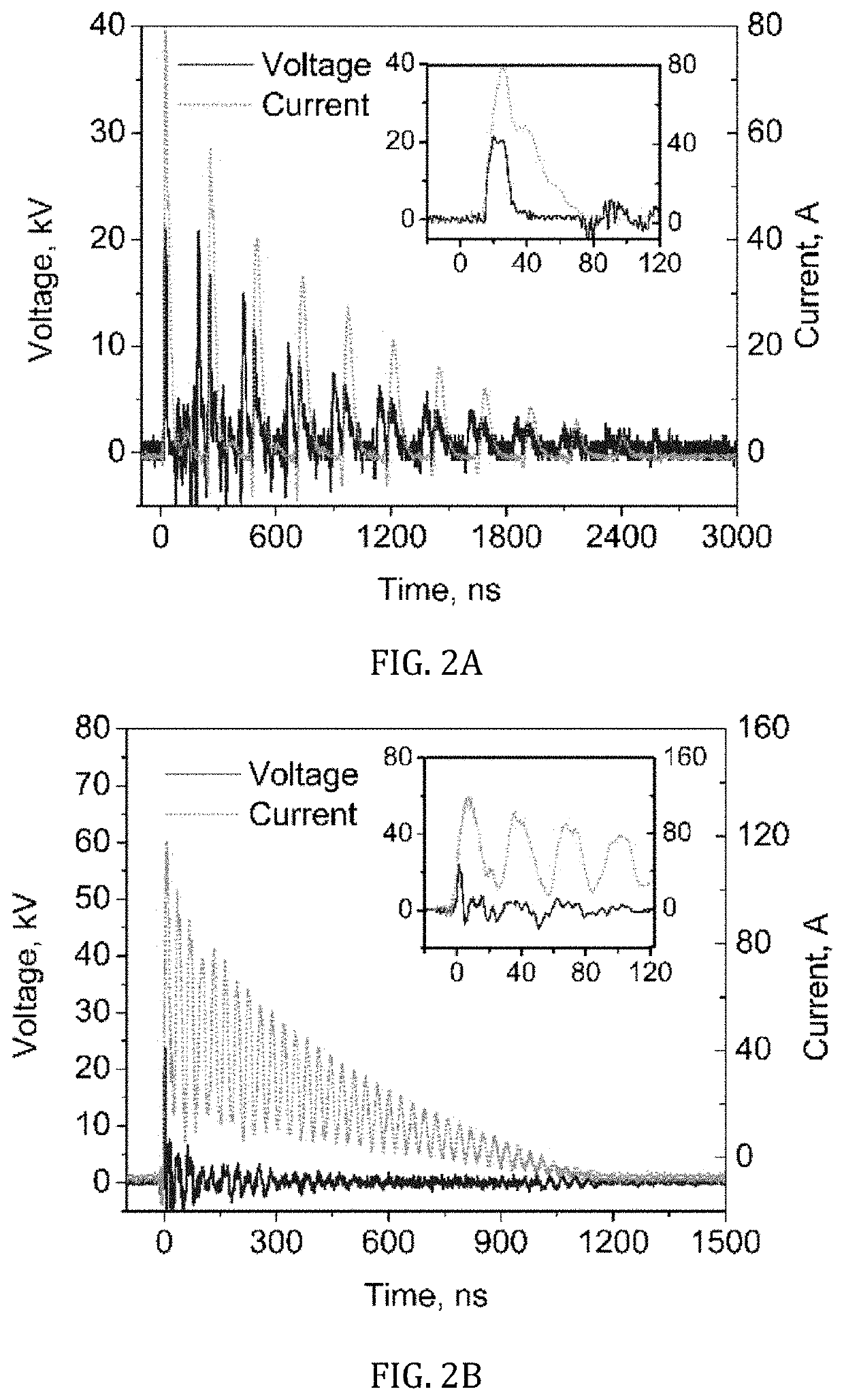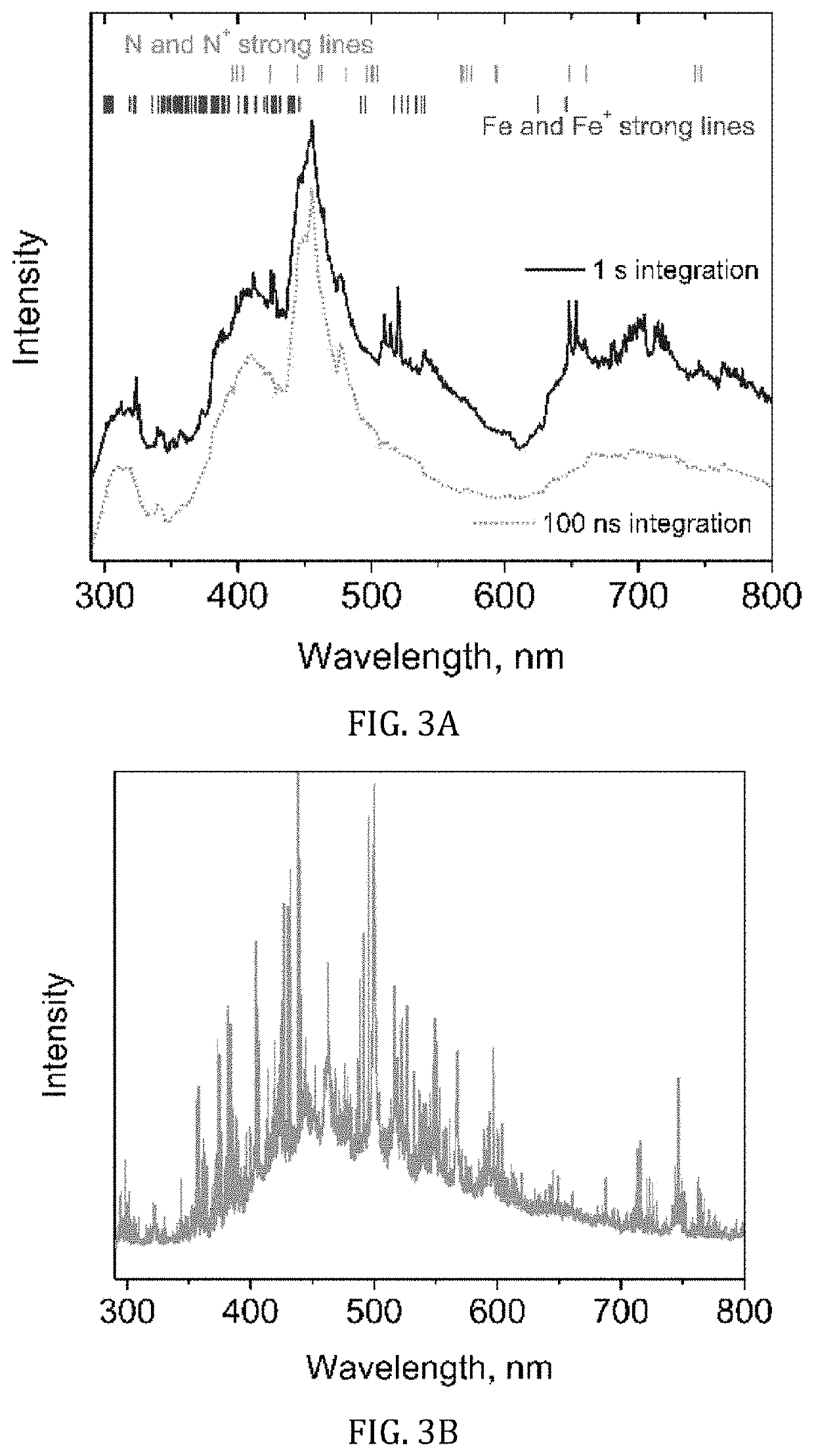Method for generation of novel materials using nanosecond-pulsed discharge plasma in liquid phase
a technology of nanosecond pulse plasma and liquid phase, which is applied in the direction of energy-based chemical/physical/physical-chemical processes, chemical/physical/physical-chemical processes, chemistry apparatus and processes, etc., can solve the problems of large energy release, preventing the practical application of these materials, and lack of recoverable pathways to ambient conditions for these systems
- Summary
- Abstract
- Description
- Claims
- Application Information
AI Technical Summary
Benefits of technology
Problems solved by technology
Method used
Image
Examples
Embodiment Construction
[0044]The present disclosure is directed to the application of plasma for synthesis of polymeric nitrogen compounds, such as, for example, as neutral or ionic N6. In some embodiments, the polymeric nitrogen compounds are synthesized from a sodium azide precursor. Nanosecond-pulsed plasma ignited in liquid nitrogen is a unique tool for synthesis of unconventional materials due to the combination of energetic properties of the discharge (high densities of reactive species, pressures and radiation) with the low temperature of the surrounding dense liquid
[0045]In another aspect, the present invention relates to plasma-generated materials from liquid nitrogen, such as polynitrogen compounds. Nanosecond-pulsed discharge in liquid nitrogen ignited using a needle electrode and positive 60 kV high voltage pulses was characterized using fast and shadow imaging, as well as optical emission spectroscopy. Estimation of temperature was accomplished using molecular nitrogen emission of second posi...
PUM
 Login to View More
Login to View More Abstract
Description
Claims
Application Information
 Login to View More
Login to View More - R&D
- Intellectual Property
- Life Sciences
- Materials
- Tech Scout
- Unparalleled Data Quality
- Higher Quality Content
- 60% Fewer Hallucinations
Browse by: Latest US Patents, China's latest patents, Technical Efficacy Thesaurus, Application Domain, Technology Topic, Popular Technical Reports.
© 2025 PatSnap. All rights reserved.Legal|Privacy policy|Modern Slavery Act Transparency Statement|Sitemap|About US| Contact US: help@patsnap.com



